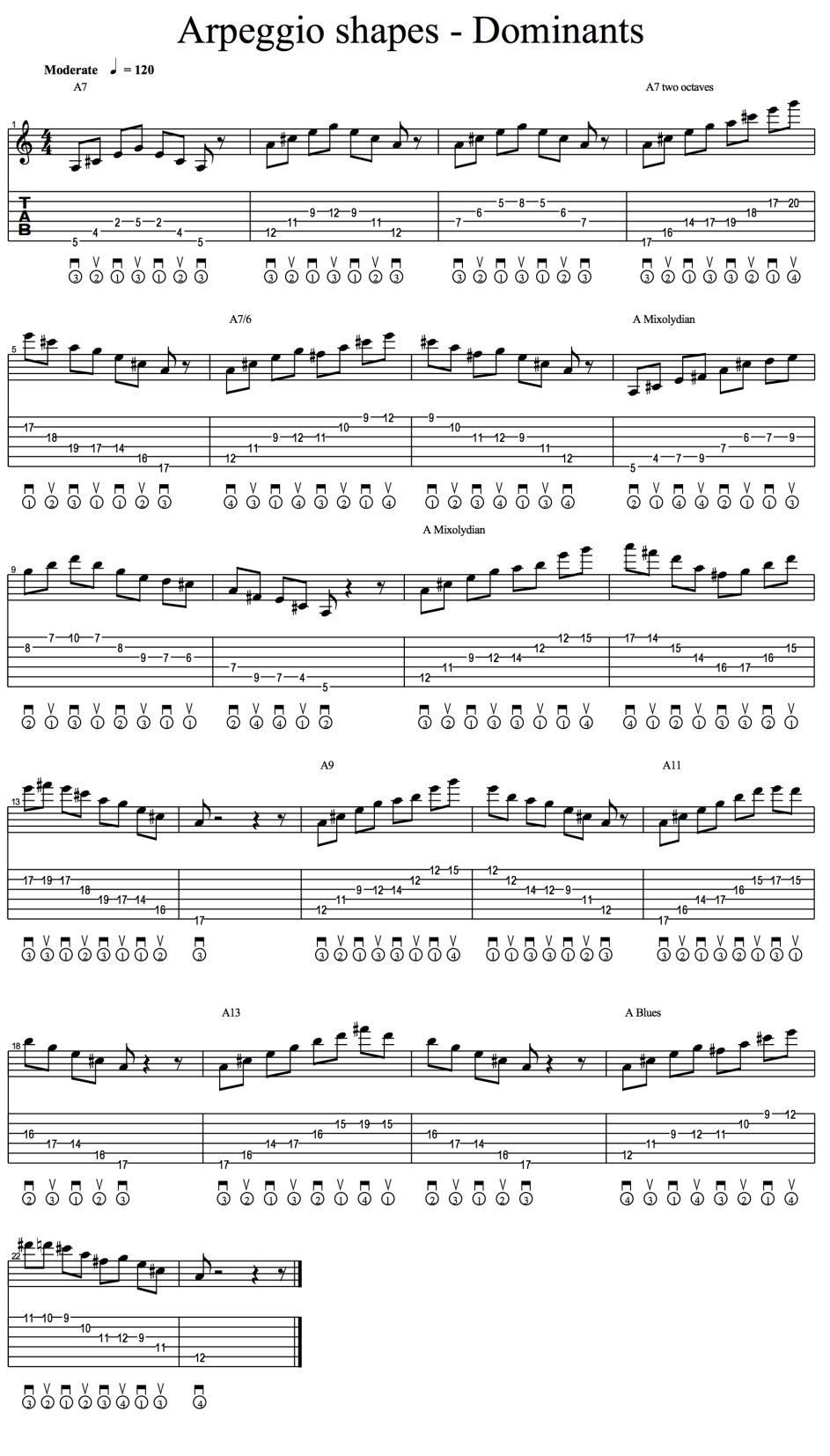If you have some playing experience then you should know that chords and arpeggios contain the same notes. The only difference is that the chord is usually played in some kind of a rhythm group whilst the arpeggio is used as a soloing device. Keep in mind that arpeggios need to be played one note at a time with every technique one uses (sweeping,legato or alternate picking). For this reason the shapes will differ from each other for ease of usage. I tried to create useful shapes that can be used easily in any type of soloing. One of the biggest problems guitarists find when faced with arpeggios is that the shapes are usually tough to learn and memorize, and many of them are nearly impossible to execute! With that in mind, I've included the most popular and the least difficult ones. I've included the fret hand fingerings plus the picking directions. It will be very useful and beneficial to play these shapes smoothly so go ahead and 'obey' the rules!
Dominants should be the arpeggios you study first since they are used regularly in the Blues/Rock progressions and songs. Learning them in the I IV V format would be great since this is the progression the blues, and many rock tunes, use. For example, if you kick off learning the shapes in the key of A then transpose to D ( the IV in the key of A ) and then to E ( the V in the key of A ). There are the 7th the 9th the 11th the 13th and some 'adds' so all the Mixolydian scale ( the mode that mirrors the Dominant chord ) is covered. Do memorize the shape, sound, fingering and location of all the shapes so you can use and transpose freely in all keys. This is called photographic memory and is a must for every guitar player's chord and arpeggio learning experience!

"Arpeggio Shapes: Dominants" - pdf format
Learn them slowly and perfectly so you can build up to smooth speed playing if needed. In my next lesson we'll switch to Major 7's. But get these under your belt first!
Best of luck.
Jean-Pierre Zammit is a guitarist and instructor from Malta who has been playing guitar since the age of 14.
Zammit uses complex techniques, time shifts and scales in his writing, and always puts the song and the message he wants to portray first.
His is endorsed by Music Man guitars to use their Axis BFR models and Ernie Ball strings.